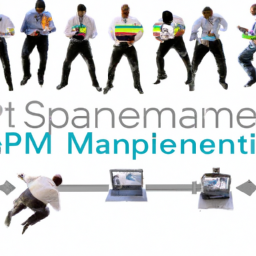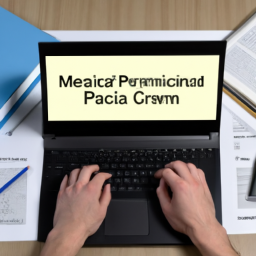Are you ready to decode the secrets of the PSM II exam? Get ready to uncover the key concepts and frameworks you need to know to ace this challenging test.
In this article, we’ll guide you through the exam format, share effective tips and strategies for preparation, and help you avoid common mistakes.
From registration to results, we’ll be your trusted companion on this journey to PSM II success.
Let’s dive in and unlock your potential!
Key Takeaways
- The PSM II exam consists of 30 multiple-choice questions.
- The exam assesses decision-making abilities in complex and ambiguous situations.
- Understanding the Scrum framework is crucial for success in the exam.
- Effective exam preparation involves active learning techniques and time management strategies.
Understanding the PSM II Exam Format
You’ll need to understand the PSM II exam format before you can start preparing for it. The exam is designed to gauge your knowledge and understanding of the agile mindset and the scrum master role.
It consists of 30 multiple-choice questions and you have 90 minutes to complete it. The questions are scenario-based, requiring you to apply your knowledge to practical situations.
The exam assesses your ability to make decisions in complex and ambiguous situations, as well as your understanding of scrum values, principles, and practices. To pass the exam, you must score at least 85%.
It’s important to study and review the scrum guide thoroughly to ensure you have a solid foundation before attempting the exam.
Key Concepts and Frameworks Tested in the PSM II Exam
One of the key concepts and frameworks tested in the PSM II exam is the Scrum framework. As an aspiring Professional Scrum Master, it is crucial for you to have a clear understanding of this framework.
Scrum is an agile methodology that follows a set of principles designed to enhance collaboration, adaptability, and productivity within a team. It emphasizes iterative development, continuous improvement, and self-organization.
In the PSM II exam, you can expect questions that assess your knowledge of the Scrum framework, including its roles, events, artifacts, and values. It is important to study and familiarize yourself with the Scrum framework thoroughly to confidently tackle these questions.
Now that you understand the significance of the Scrum framework, let’s move on to the next section, where we will discuss tips and strategies for effective exam preparation.
Tips and Strategies for Effective Exam Preparation
To effectively prepare for the PSM II exam, it’s essential to implement tips and strategies that will enhance your study process. Start by using effective study techniques such as active learning, which involves engaging with the material through practice questions and discussions. This will help you retain information better.
Additionally, create a study schedule and stick to it to ensure proper time management. Break down the topics into smaller sections and allocate specific time slots for each. This will help you cover all the necessary material without feeling overwhelmed.
Furthermore, make use of resources such as practice exams and study guides to familiarize yourself with the exam format and content. By following these study techniques and managing your time effectively, you will be well-prepared for the PSM II exam.
Now that you have a grasp on effective study techniques and time management, let’s explore some common mistakes to avoid in the PSM II exam.
Common Mistakes to Avoid in the PSM II Exam
Now that we’ve covered effective study techniques and time management, let’s delve into some common mistakes to avoid during the PSM II exam. To ensure success, it’s important to be aware of these pitfalls and take proactive measures to avoid them.
Here are five common mistakes to steer clear of:
- Neglecting to thoroughly understand the Scrum framework and its principles
- Failing to practice with sample questions and mock exams
- Overlooking the importance of time management during the exam
- Not reading the questions carefully and rushing through the exam
- Neglecting to review and revise your answers before submitting
By avoiding these common mistakes, you’ll increase your chances of passing the PSM II exam with flying colors.
Now, let’s move on to the next section, where we’ll discuss navigating the PSM II exam, from registration to results.
Navigating the PSM II Exam: From Registration to Results
Ensure your success in navigating the PSM II exam by familiarizing yourself with the registration process and understanding how to interpret your results.
The exam registration process is straightforward and can be done online. Simply visit the official website, create an account, and select a date and location that works for you. Once registered, you will receive a confirmation email with important details about the exam.
On the day of the exam, make sure to arrive early and bring a valid ID. After completing the exam, you will receive your results immediately. It’s important to understand how to interpret your results.
A passing score indicates that you have demonstrated a solid understanding of the Scrum framework and can effectively apply it in real-world scenarios. However, if you don’t pass, don’t get discouraged. Use your results as a guide to identify areas for improvement and continue your learning journey.
Frequently Asked Questions
Are There Any Penalties for Guessing on the PSM II Exam?
Guessing on the PSM II exam can result in penalties. It’s important to note that the passing score is based on the number of correct answers, not the total number of questions attempted.
This means that if you guess incorrectly, you will receive a penalty and it could negatively impact your overall score. To maximize your chances of success, it is recommended to only answer questions that you are confident about.
How Long Does It Usually Take to Receive the Results of the PSM II Exam?
On average, it takes a few days to receive the results of the PSM II exam.
The process of receiving the results involves the examination board reviewing your answers and scoring them.
Once this is done, they will notify you of your results.
Rest assured, the waiting time is usually not too long, so you can expect to receive your results promptly.
Are There Any Specific Prerequisites or Eligibility Requirements for Taking the PSM II Exam?
To take the PSM II exam, you need to meet certain prerequisites and eligibility requirements.
These requirements ensure that you have the necessary experience and knowledge to tackle the exam successfully.
It is important to understand the prerequisites and eligibility criteria before registering for the exam. This will help you determine if you are eligible to take the exam and if you have the necessary qualifications to pass it.
Make sure to review the requirements thoroughly to avoid any surprises.
Is There a Limit to the Number of Times a Candidate Can Take the PSM II Exam?
Yes, there is a retake policy for the PSM II exam. The number of times you can take the exam is not limited, but there is a waiting period of 14 days between each attempt.
To increase your chances of passing, it is recommended to thoroughly prepare for the exam. Some exam preparation tips include studying the Scrum Guide, practicing with sample questions, and seeking feedback from experienced Scrum practitioners.
Can the PSM II Exam Be Taken Online or Does It Have to Be Taken In-Person at a Testing Center?
When it comes to taking the PSM II exam, you may wonder if you have the option to take it online or if you have to go to a testing center in person.
Well, the good news is that you can take the exam both online and in person. Each option has its pros and cons, so it’s important to weigh them carefully.
To prepare effectively for the exam, make sure to study thoroughly, practice with mock exams, and seek guidance from experienced Agile practitioners.
Conclusion
In conclusion, preparing for the PSM II exam requires a clear understanding of the format, key concepts, and effective strategies. Avoiding common mistakes can greatly improve your chances of success.
Interestingly, according to recent statistics, the pass rate for the PSM II exam is around 85%. This highlights the importance of thorough preparation and demonstrates that with the right approach, achieving a passing score is attainable.
Remember to stay focused, study diligently, and utilize the tips provided to conquer the PSM II exam with confidence.


















